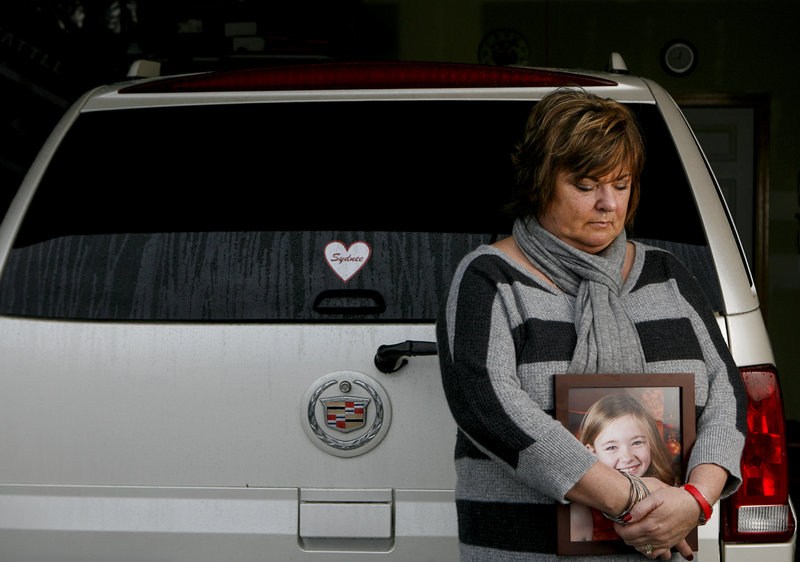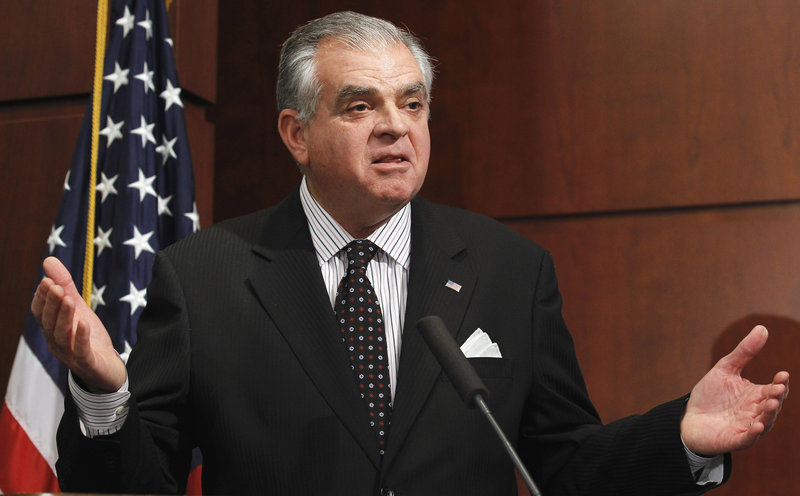SAN FRANCISCO – In the private hell of a mother’s grief, the sounds come back to Judy Neiman. The SUV door slamming. The slight bump as she backed up in the bank parking lot. The emergency room doctor’s sobs as he said her 9-year-old daughter Sydnee, who previously had survived four open-heart surgeries, would not make it this time.
Her own cries of: How could I have missed seeing her?
The 53-year-old woman has sentenced herself to go on living in the awful stillness of her West Richland, Wash., home, where she makes a plea for what she wants since she can’t have Sydnee back: more steps taken by the government and automakers to help prevent parents from accidentally killing their children, as she did a year ago this month.
“They have to do something, because I’ve read about it happening to other people. I read about it and I said, ‘I would die if it happens to me,’” Neiman says. “Then it did happen to me.”
There is, in fact, a law in place that calls for new manufacturing requirements to improve the visibility behind passenger vehicles to help prevent such fatal backing crashes, which the government estimates kill some 228 people every year — 110 of them children age 10 and under — and injures another 17,000.
Congress passed the measure with strong bipartisan support, and Republican President George W. Bush signed it in 2008.
But almost five years later, the standards have yet to be mandated because of delays by the U.S. Department of Transportation, which faced a Feb. 28, 2011, deadline to issue the new guidelines for car manufacturers. Transportation Secretary Ray LaHood has pushed back that deadline three times — promising in February that the rules would be issued by year’s end. With still no action, safety advocates and anguished parents such as Neiman are asking: What’s taking so long to remedy a problem recognized by government regulators and automakers for decades now?
“In a way, it’s a death sentence, and for no good reason,” said former Public Citizen president Joan Claybrook, who once directed the federal agency responsible for developing the rules.
The proposed regulations call for expanding the field of view for cars, vans, SUVs and pickup trucks so that drivers can see directly behind their vehicles when in reverse — requiring, in most cases, rear-view cameras and video displays as standard equipment.
The National Highway Traffic Safety Administration, charged with completing the new standards, declined requests to discuss the delays. Spokeswoman Karen Aldana said the agency would not comment while the rulemaking process was ongoing. In a letter to lawmakers in February, LaHood said his agency needed more time for “research and data analysis” to “ensure that the final rule is appropriate and the underlying analysis is robust.”
Others insist the issue is money, and reluctance to put any additional financial burdens on an industry still recovering from the economic crisis. Development of the new safety standards came even as the Obama administration was pumping billions of dollars into the industry as part of its bailout package.
“They don’t want to look at anything that will cost more money for the automobile industry,” said Packy Campbell, a former Republican state lawmaker from New Hampshire who lobbied for the law.
NHTSA has estimated that making rear cameras standard on every car would add $58 to $88 to the price of vehicles already equipped with dashboard display screens and $159 to $203 for those without them.
The Alliance of Automobile Manufacturers, a lobbying group that represents automakers, puts the total cost to the industry at about $2 billion a year. Last December, the group met with White House budget officials to propose a less expensive alternative: reserving cameras for vehicles with extra-large blind zones and outfitting the rest with curved, wide-angle exterior mirrors.
Before the delays, all new passenger vehicles were to carry cameras and video displays by September 2014. The industry has now asked for two more years after the final rules are published to reach full compliance.
Despite its resistance, the industry on its own has been installing rear-view cameras, a feature first popularized two decades ago in Japan and standard on nearly 70 percent of new cars produced there this year. In the United States, 44 percent of 2012 models came with rear cameras standard, and 27 percent had them as options, according to the automotive research firm Edmunds.
Send questions/comments to the editors.




Success. Please wait for the page to reload. If the page does not reload within 5 seconds, please refresh the page.
Enter your email and password to access comments.
Hi, to comment on stories you must . This profile is in addition to your subscription and website login.
Already have a commenting profile? .
Invalid username/password.
Please check your email to confirm and complete your registration.
Only subscribers are eligible to post comments. Please subscribe or login first for digital access. Here’s why.
Use the form below to reset your password. When you've submitted your account email, we will send an email with a reset code.